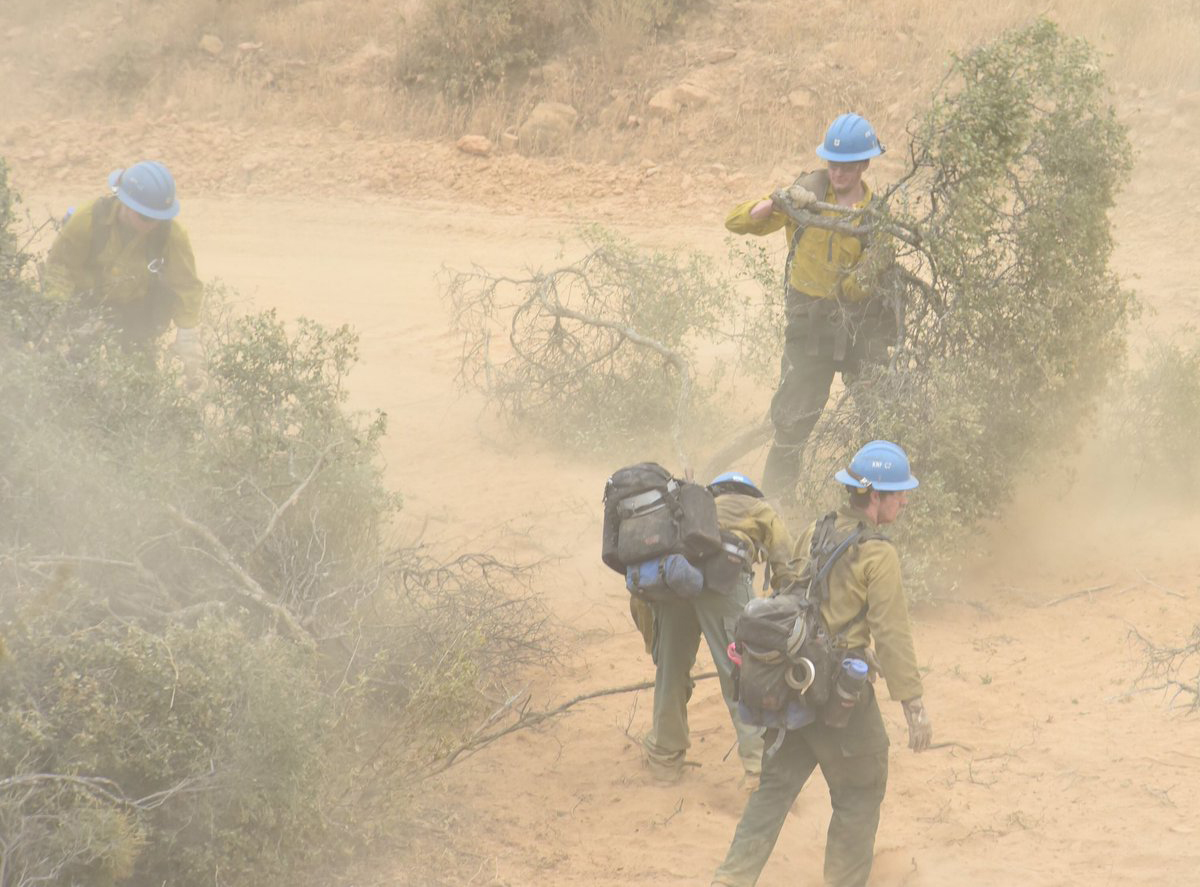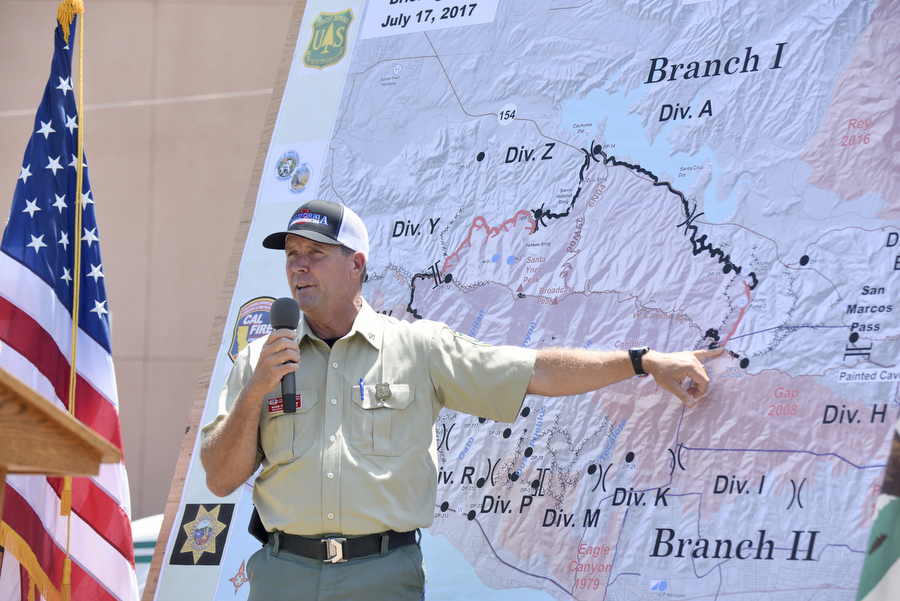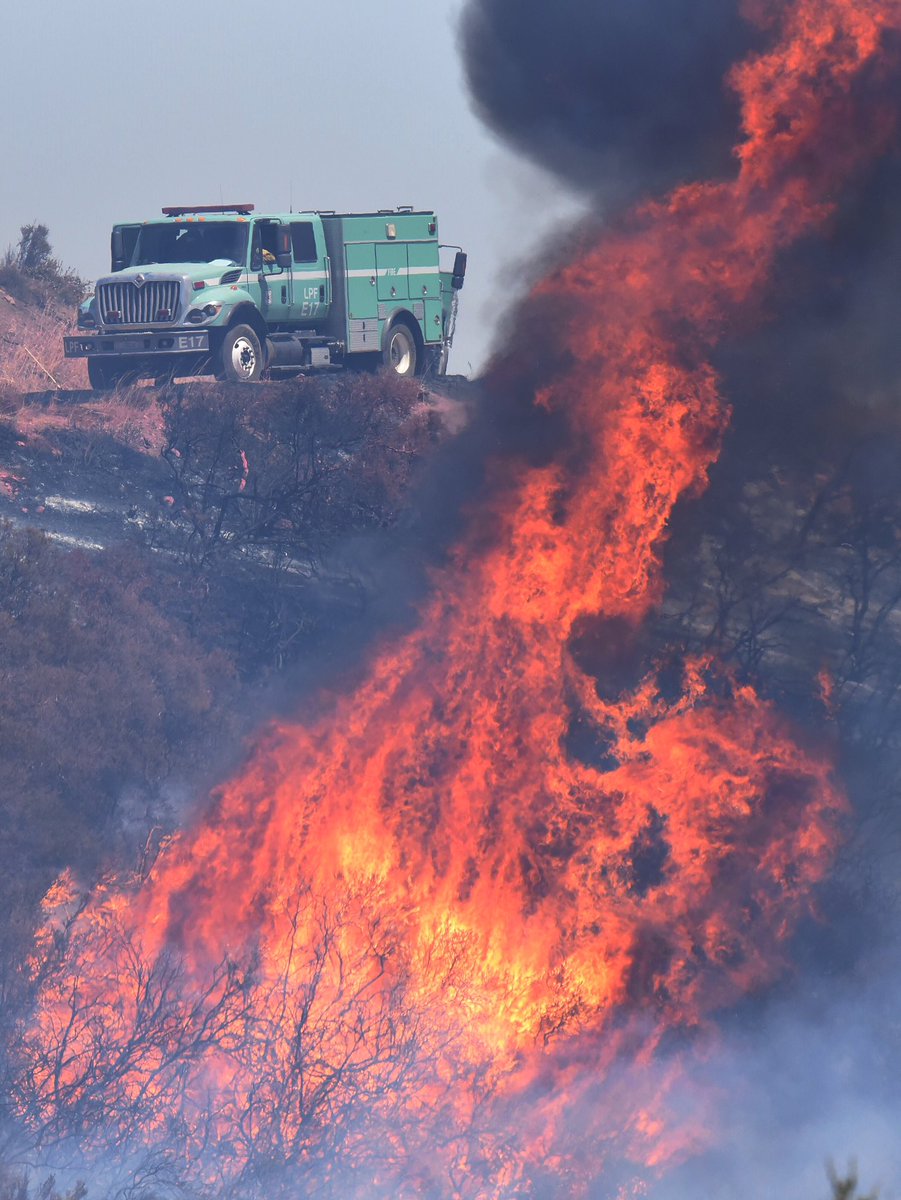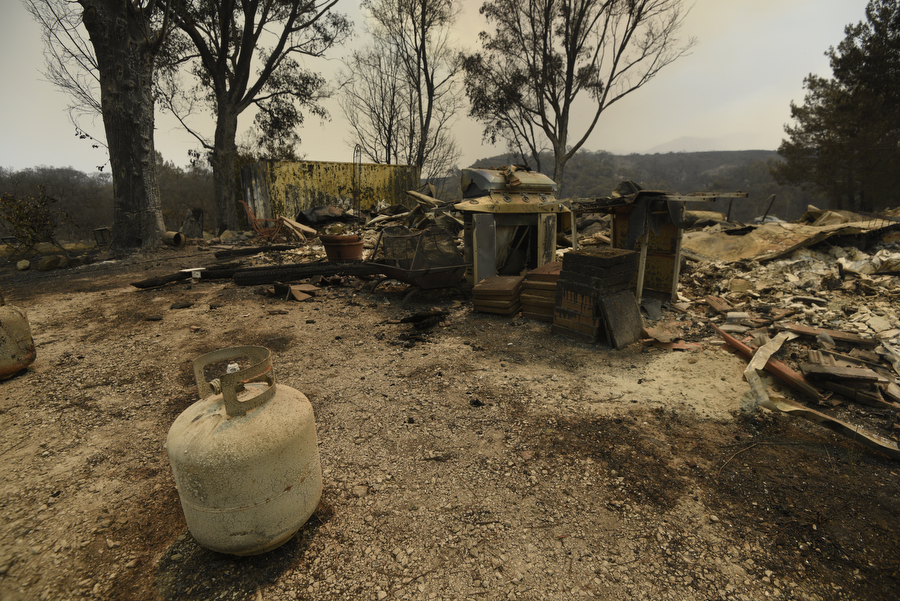Mopping Up the Whittier Fire
Fire Officials Assess Damage and Praise Cooperation

As the Whittier Fire approaches the two-week mark, the lifting veil of smoke has revealed a clearer picture of the initially erratic wildfire that is now close to full containment. Since sparking to life on Saturday, July 8, at Camp Whittier, just off Highway 154, the blaze has raged and ebbed, fueled in its formative hours by a regional heatwave and then pushed by sundowner winds gusting to 30 miles per hour. Thousands were forced to evacuate from Cachuma Lake and Paradise Road’s campgrounds. The most dramatic rescue was at Circle V Ranch Camp, where firefighting and search-and-rescue crews saved dozens of children and their counselors trapped at the end of a narrow dirt road. That night, the Whittier Fire burned over the crest of the mountains, quickly scorching some 1,500 acres and threatening front-country residences in westernmost Goleta. But within 48 hours — as winds backed off, temperatures dropped, and a sizable marine layer arrived — containment jumped to 49 percent. Ground crews cut fire breaks through thick chaparral, and aircraft boxed in the blaze, dropping water and retardant. Officials with the U.S. Forest Service — the fire’s lead agency — have yet to confirm or deny early reports that a car fire at Camp Whittier is to blame, offering only, “The cause remains under investigation.”
As the fire spilled into Santa Barbara’s front country, officials called for mandatory evacuations along Farren Road andsent out evacuation warnings between Las Varas and Winchester canyons. No homes or outbuildings have been damaged in that area, or anywhere in the front country, stressed incident commander Forest Service Division Chief Mark von Tillow. At a press conference on Monday, July 17, von Tillow said the fire had destroyed 16 residences and 30 outbuildings and damaged others, but all of the structures were located near the area where the fire originated. An accurate headcount of displaced residents is difficult to come by, according to officials, since displaced homeowners may not have checked in to the Red Cross shelter at San Marcos High School, which also put up evacuated campers. One week after the start of the blaze, on July 16, nearly 60 people stayed the night at San Marcos; the next night, there were 31. The shelter closed on July 19 as containment reached 75 percent.

As top firefighting brass from state and federal agencies lined up near an enlarged map of the fire, Monday’s press conference quickly became what insiders are calling a deliberate show of solidarity. Cal Fire Director Ken Pimlott — a Governor Jerry Brown appointee with 31 million acres under his watch — emphasized that everybody’s in this together, no matter what color uniform they wear. In the last decade, California has “experienced some of the most devastating wildfires in its history,” he said, lauding the strong partnerships between nearly 1,000 agencies, from small-town fire departments to federal air-attack crews. “We don’t have the luxury to worry about boundaries [or] deal with any kind of squabbling,” Pimlott said. “There was never any question that the state was going to bring to bear whatever resources [were] required by our local [and] federal partners to mitigate the risk here.”

Yet it was well known that the director of California’s other firefighting agency, which is part of the Governor’s Office of Emergency Services (Cal OES), Mark Ghilarducci, sent a letter on July 3 to U.S. Forest Service Chief Thomas Tidwell, essentially accusing the federal agency of failing to fully refund local fire departments for service rendered on Forest Service fires. “I cannot continue to support the deployment of resources to protect federal land that may ultimately bankrupt our local governments,” wrote Ghilarducci. Three days later, Tidwell responded by saying that of the $18 million in question, $14 million had already been processed, another $2 million was in the works, and a federal audit had revealed that the Forest Service may have been overbilled by $4.5 million between 2008 and 2012. “It was determined the Forest Service was overpaying local governments … and that controls need to be in place to ensure [the excess payments] did not occur again,” Tidwell wrote.
The Forest Service’s Pacific Southwest regional forester, Randy Moore — who oversees 18 national forests totaling 20 million acres — also spoke, saying that while flying over the Whittier Fire on his way to the press conference, he could tell by the accuracy of the fire lines and retardant-painted chaparral that interagency cooperation was exceptional. “The relationship has been absolutely outstanding,” Moore said. “Fires know no boundaries; we shouldn’t have any boundaries either.”
Santa Barbara County Fire Chief Eric Peterson added that “the cooperative environment in Santa Barbara County creates a system” that streamlines rescues like the one at Circle V during the fire’s opening day. Also on hand were Forest Service Deputy Regional Forester Jeanne Wade Evans and former Los Padres National Forest supervisor Bob Baird, now the region’s fire director. Cal OES was not represented.

With the team having achieved 62 percent containment by the morning of July 17 and sealed off all but the fire’s southern boundary, von Tillow said he felt they’d turned the corner. “We got a chokehold on this thing.” Aside from boots on the ground and drops from the skies, von Tillow credited science-based techniques, such as computer models that allowed commanders to punch in temperature, wind, terrain, and other parameters to a computer-simulated Whittier Fire, watch how the blaze reacted, and then adjust their plan of attack accordingly. He said that such modeling allowed shot-callers to predict last Friday’s run, when containment dropped to 32 percent and acreage expanded. However, the fire did not overtake additional structures, and firefighters stayed out of harm’s way. While officials have reported some “hydration and heat-related issues” and hundreds of cases of poison oak, crews have a safe track record.
As of deadline Wednesday morning the Whittier Fire had consumed 18,395 acres. Officials had yet to announce an expected date of full containment, and its cost so far had reached $27.6 million. As Whittier continues to fizzle out, crews have been sent home to rest before their next assignment.
“It’s still July,” von Tillow said. “We’ve got a long ways to go. We’re not out of the weeds on any of this.”



